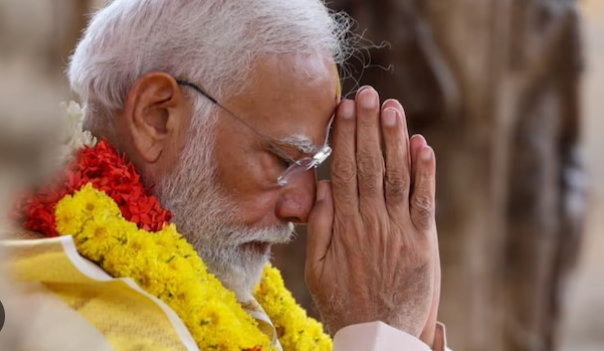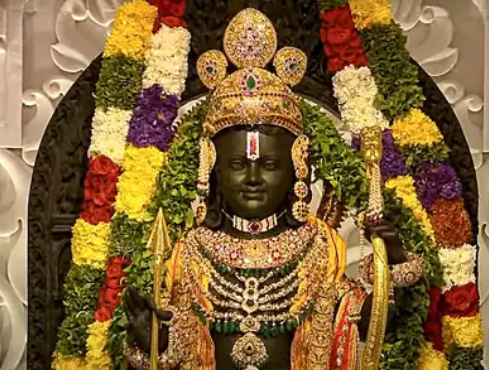
Surya Tilak Mechanism Illuminating Lord Ram’s Forehead at Ayodhya’s Grand Ram Temple
Surya Tilak Mechanism: A Divine Illumination on Lord Ram’s Forehead at Ayodhya’s Grand Ram Temple
In a testament to technological ingenuity and divine symbolism, the Ayodhya Ram temple boasts a unique feature known as the Surya Tilak mechanism. This remarkable system is designed to align the Sun’s rays precisely onto the forehead of Lord Ram’s idol at noon on Sriram Navami day every year, bathing the deity in a celestial glow for approximately 6 minutes, as revealed by Union Minister Jitendra Singh.
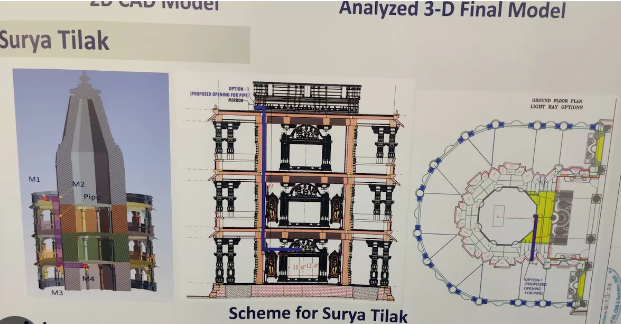
Celebrated on the ninth day of the first month in the Hindu calendar, usually falling in March-April, Ram Navami marks the auspicious occasion of Lord Rama’s birthday, the seventh incarnation of Lord Vishnu. The Surya Tilak mechanism adds an extra layer of significance to this celebration, symbolizing the harmony between science, technology, and spirituality.
Minister Jitendra Singh highlighted the collaborative efforts of Indian scientific institutions in bringing this innovative concept to life. The Indian Institute of Astrophysics in Bengaluru played a crucial role by providing technical support on the Sun’s path and Optica, ensuring the precise alignment of the Sun’s rays onto the deity’s forehead.
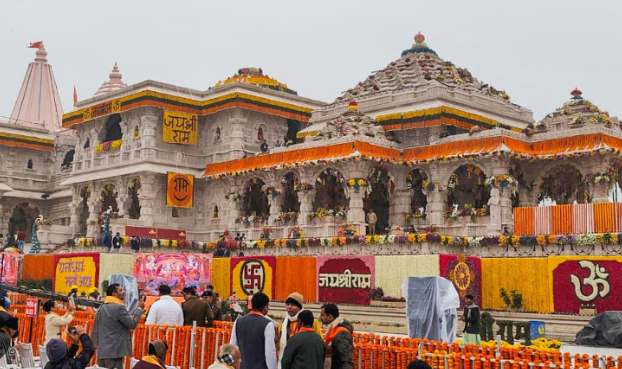
Explaining the intricate workings of the mechanism, Singh stated, “Gearbox and reflective mirrors/lenses have been arranged such that sun rays from the third floor near the shikara will be brought to Garbha Griha using well-known principles of tracking the Sun’s path.” This engineering feat is a testament to the fusion of ancient principles and modern technology, creating a spiritual spectacle that resonates with devotees.
Singh acknowledged the pivotal role of CSIR-CBRI Roorkee (Council of Scientific and Industrial Research – Central Building Research Institute) in the early stages of the Ram Mandir construction. The institute contributed to the structural design of the main temple, including the innovative Surya Tilak mechanism. Additionally, CSIR-CBRI Roorkee vetted the design of the temple foundation and implemented Structural Health Monitoring of the main temple, ensuring its longevity and stability.
Further collaboration came from CSIR-NGRI Hyderabad (Council of Scientific and Industrial Research – National Geophysical Research Institute), which provided valuable insights into foundation design and seismic/earthquake safety. The involvement of government science institutes, including IITs and expertise from ISRO’s space technologies, showcased a holistic approach to the construction of this grand structure.
A breakdown of the contributions from government science institutes reveals a multifaceted collaboration:
- CSIR-CBRI Roorkee: Structural design of the Ram Temple.
- CSIR-NGRI Hyderabad: Insights into foundation design and seismic safety.
- DST-IIA Bengaluru (Department of Science and Technology – Indian Institute of Astrophysics): Technical support for the Sun’s path, specifically the Surya Tilak mechanism.
- CSIR-IHBT Palampur (Council of Scientific and Industrial Research – Institute of Himalayan Bioresource Technology): Contribution to the blooming of tulips for the Ram Mandir Pran Pratishtha ceremony in Ayodhya on January 22.
In conclusion, the convergence of ancient traditions and cutting-edge technology in the construction of the Ram Mandir not only reflects the nation’s commitment to preserving its cultural heritage but also showcases the collaborative spirit of Indian scientific institutions. The Surya Tilak mechanism stands as a radiant marvel, symbolizing the union of celestial reverence and human ingenuity at the heart of Ayodhya’s grand Ram Temple.
The incorporation of government science institutes in the construction of Surya Tilak at the Ram Mandir exemplifies a harmonious blend of tradition and innovation. CSIR-CBRI Roorkee’s role in the structural design ensures that the temple stands as a testament to architectural brilliance and structural integrity. Their involvement in vetting the foundation design and implementing Structural Health Monitoring underscores a commitment to both the aesthetic and the enduring strength of the sacred structure.
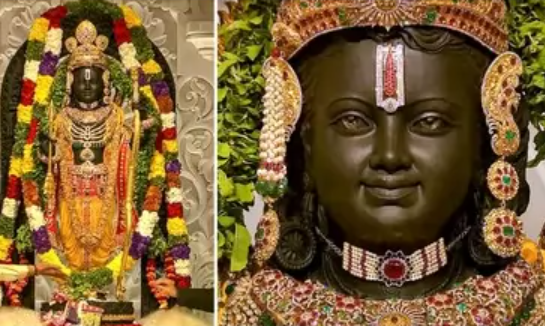
CSIR-NGRI Hyderabad’s contribution, offering insights into foundation design and seismic safety, adds a layer of scientific rigor to the project. In a region prone to seismic activity, their expertise ensures not only the longevity of the Ram Mandir but also the safety of the devotees who will visit the sacred site for generations to come.
The partnership with DST-IIA Bengaluru highlights the integration of advanced astrophysical knowledge into the spiritual realm. The technical support provided by the Indian Institute of Astrophysics ensures the precise alignment of the Sun’s rays onto Lord Ram’s forehead during the annual Sriram Navami, enhancing the divine experience for worshippers.
For the latest updates-click here.

